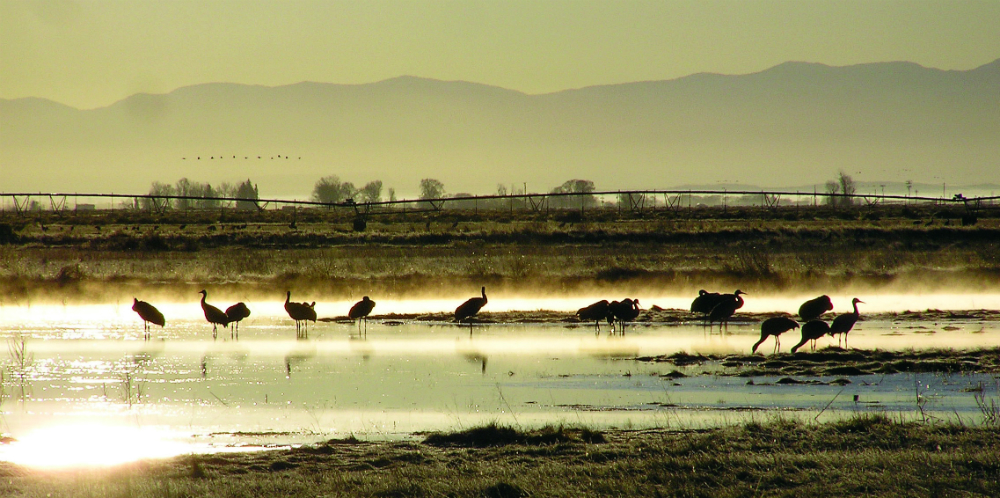The San Luis Valley, Headwaters of the Rio Grande
From the San Juan Mountains to the west, the Rio Grande River flows through canyons, across high parks and then out into the San Luis Valley. There it meanders across the broad flat plain, supplying working ranches and extensive wetlands, and thereby extraordinary wildlife. To the east, the soaring Sangre de Cristos rise in a nearly vertical wall with peaks over 14,000 feet.
With only 6 to 8 inches of annual rainfall on the dry San Luis Valley floor, local communities, farmers and ranchers are utterly dependent on snowmelt, which supplies river flows and recharges the vast aquifers underlying the valley. The Rio Grande River forms a green ribbon of life in this high desert, and its waters are spread far and wide. Canals and ditches sustain large areas of agricultural production, in combination with groundwater drawn from the aquifers. To experience the Rio Grande Basin for yourself:
Go:
A summer drive to the Rio Grande Reservoir high above the town of Creede will carry you past beautiful, conserved, private ranches along the Rio Grande River, then off the pavement and up into the San Juan National Forest, where fishing, rafting, and boating on the reservoir are all available. Above that are jeep and then hiking and riding trails into the higher regions of the Weminuche Wilderness. Check out www.coloradodirectory.com/ fishing/fishing_creedewest.html for more information on fishing in the area.
See:
When melting snow from the Sangres runs down Medano Creek and across the sandfields of Great Sand Dunes National Park, the water creates a delightful, but temporary, beachfront at the foot of the peaks. The water spreads and rises in sand waves, and people of all ages frolic in the flows. The park’s website provides updates on streamflows for people who want to catch the short-lived phenomenon: www.nps.gov/grsa.
Do:
Come the spring migration of the greater sandhill cranes from the south, birders likewise migrate to the annual Monte Vista Crane Festival, held in mid-March. Seeing the 20,000 or so sandhill cranes forage and do their mating dances, in noisy association with a vast array of ducks and geese, is an experience that draws people back each year. The Monte Vista National Wildlife Refuge is just a few miles south of the town of Monte Vista and the Rio Grande River. Diversions from the river, as well as some water pumped from wells, provide water to the extensive shallow wetlands of the refuge, which in past days was called “the duck farm” by some skeptical ranchers. Now, through a deep collaboration formed with the refuge and many partners, approximately 8,000 acres of the ranches upstream on Rock Creek, northwest of the refuge, have been protected through voluntary conservation easements. This helps secure the water supply for the refuge, as well as providing vital food resources for the migrating hordes. It’s a common sight to see the tall gray forms of the cranes out among grazing cattle in the wet meadows of the ranches. For information about the Crane Festival, and the fall Kids Crane Festival, go to www.cranefest.com.
Act:
For ideas on how you can involved, contact the Rio Grande Headwaters Land Trust at www.riograndelandtrust.org, the Rio Grande Headwaters Restoration Project at www.riograndeheadwaters.org, or the Rio Grande Basin Roundtable chair Mike Gibson at (719) 589-2230.


 Print
Print